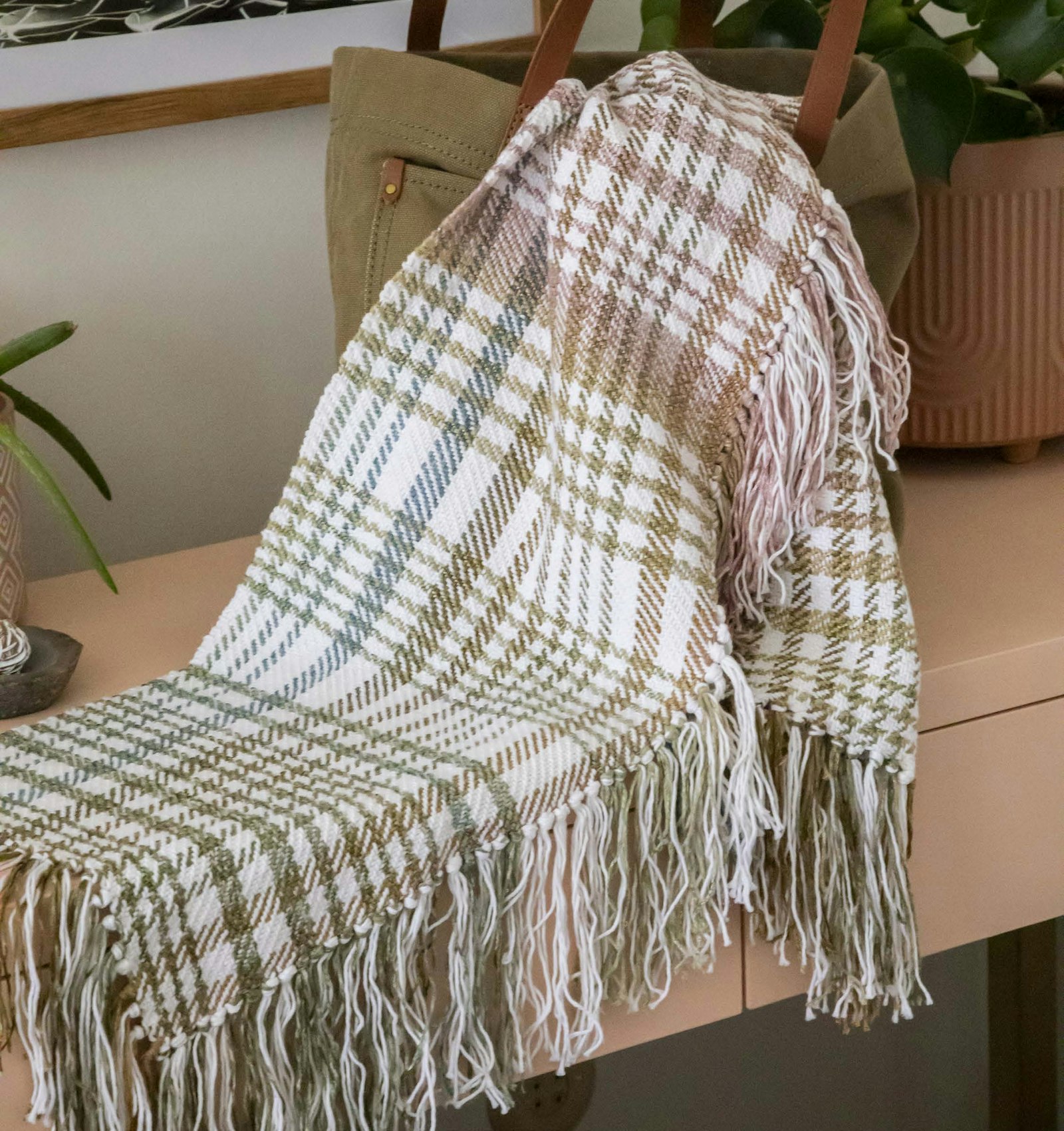When I first started weaving, most of my projects had a single color in warp and weft or, when I used multiple colors, the pieces followed strict rules of symmetry. It was easy and looked good. Then I started playing with variegation, ombre effects, and asymmetry; a whole new world of weaving opened up. For this issue, I wanted to celebrate the creative ways we change from one color to another in weaving.
What do I mean by shifting colors or creative color changes? In this issue, I want projects with multiple colors in either warp or weft where the color changes happen in a unique or thoughtful way. This might mean using hand-painted, speckled, or self-striping yarns for specific effects such as color pooling, faux ikat, or interesting plaid effects.
Top row: Sand and Sea Wrap by Rachel Simmons, photo credit George Boe; Frosted Windows Cowl by Angela Tong, photo credit Matt Graves. Middle row: Fluffy Handwarmer by Jennifer Chapman, photo credit Matt Graves; Honey and Lemon Lace by Nancy Peck, photo credit Matt Graves. Bottom row: Tunas in the Night Runner by Mariellen Boos, photo credit George Boe; Palindrome Scarf by Judith Shangold, photo credit Matt Graves. Get a closer look at these creative color changes by clicking any image in the gallery above to open it in full-screen mode.
We’re also looking for projects that don’t use multicolored yarn but instead use interesting techniques when moving from one color to the next in warp or weft. Projects that use clasped warp or weft techniques would absolutely count, as would projects that use math to determine color changes such as the Fibonacci sequence, Pascal’s triangle, etc. You can also use colors to create an ombre effect.
The color change does not need to be the whole of the piece, but it should be the main focus. For example, the Tunas in the Night Runner shown above is a great example of how even small sections of creative color changes can have a great impact. Also, please note, projects that use discontinued yarns will not be accepted. Hand-dyed yarns will be allowed as long as either the yarn is available for sale or instructions are given in the project for dyeing the yarn.
Please note that we base our project selections for each issue on contributor photographs. Please include a photo or photos of the finished item or of items you’ve woven that are similar to the item you propose to weave for the issue. We will review the proposals and ask for additional photographs if needed. After the project-selection meeting, we will contact everyone whose project is accepted and ask that it be submitted along with the project paperwork.
You can find the palette for the issue here.
- Proposals for projects (including preliminary photos) and articles due: 6/9/2024
- Additional photographs of projects due: 8/5/2024
- Non-project article text and photographs due: 8/5/2024
- Physical projects with paperwork due: 9/16/2024
Please use our Little Looms submission form for proposals. Submission guidelines can be found here.
Please use the address below for any questions or inquiries that won’t fit into our submission form. Please contact us and ask for a physical address to send any pieces of your proposal that cannot be emailed.
Editorial email: [email protected]
We are looking forward to seeing your proposals for projects and articles!
Happy weaving!
Christina

